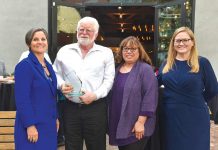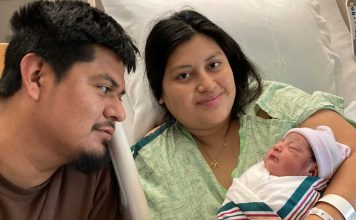Halloween is coming up, so I figure there’s no better time to
tell you that I suffer from samhainophobia. It’s only a mild case,
really.
Halloween is coming up, so I figure there’s no better time to tell you that I suffer from samhainophobia. It’s only a mild case, really. But still, as Oct. 31 approaches, I’m starting to feel a little uneasy of the big date for jack-o’-lanterns and trick-or-treating.
In case you’re uncertain what samhainophobia is, it’s the fear of Halloween. It’s a real phobia, and I’ve had it since I was 14 or 15 years old when a witch told me my mortal self would depart this world on Halloween.
OK. The witch was actually in a nightmare dream I had back as a kid growing up in Hollister. I can still see the old crone hanging like a scarecrow from a fence post in a country cornfield. She stared straight into my eyes and kept saying over and over, “You will die on Halloween.”
The words woke me up with a jolt. But the really scary thing was, even though I found myself safe in bed, I still heard her voice in my head repeating, “You will die on Halloween,” her words trailing off.
Well, ever since that strange dream, it’s no wonder I’ve felt a bit unnerved about the holiday. I pride myself in being above silly superstitions, and yet, when Halloween comes around, I find myself taking certain safety precautions so I don’t somehow fulfill the witch’s prophecy.
The spooky holiday we now call Halloween has deep roots going back all the way to the Celts of Britain. Nov. 1 for them was called Samhain (pronounced sow-en) which means summer’s end. The day marked the beginning of winter. Samhain was also considered the Celtic version of New Year’s Day and, in ancient Britain, it was the primary calendar feast day of the year. Prayers and thanksgiving for the harvest were given to the gods and goddesses as the year’s cycle renewed.
For the Celts, sundown meant the start of a new day, so their New Year’s celebrating actually began on the evening of Oct. 31. Instead of popping bottles of champagne at midnight as we do now, the ancient people danced around bonfires as the sun drifted below the horizon. They also offered sacrifices of crops to coax from the gods a plentiful harvest for the next year.
During this transition moment from one year to the next, a doorway briefly opened between this world and the next, the Celts believed. Thus, Samhain provided an opportunity for the souls of those who had died in the preceding year to come back to look for a living body to possess. Villagers dressed up in scary-looking costumes and paraded noisily among their neighbors to frighten off any disembodied spirits drifting about.
To convert pagans, the early church missionaries appropriated many pagan holidays into its own agenda and gave them a more Christian focus. So, Samhain became All Hollows Day, a day to honor all the saints. The word Halloween originated from a corruption of All Hallow’s Eve.
What we call “trick-or-treating” began in Europe in the ninth century with a custom called souling, which took place on All Souls Day. On Nov. 2, Christians strolled from house to house begging for soul cakes, which were square pieces of bread with currants in them. The sweet cakes were given in return for a promise by the beggars to pray for the souls of the dead to get them out of the limbo of purgatory and on their way to the pearly gates sooner. In modern times, candy replaced the cakes.
Like Easter and Christmas, Halloween is big business in America. The town of Anoka, Minn., goes so far as to call itself “the Halloween Capital of the World.” In 1920, to draw in the tourists, the town started an annual week-long celebration kicked off with a grand parade of ghouls.
There’s even a Halloween Store in Gilroy devoted entirely to stocking scary supplies and rental costumes. A survey done for the National Retail Federation found that about 53 percent of consumers plan to purchase a Halloween costume this year. Last year, the most popular costume was Spider-Man, with an estimated 2.15 million American kids dressed up as the bug-bound superhero.
With the billions of dollars spent on Halloween this year, the holiday has lost its religious roots and grown more secular and commercial. Some folks say Halloween is a covert plot by Satan to promote the celebration of evil. But considering Halloween’s history, I doubt this is the case.
I believe Halloween lets us collectively face the fears of our own mortality as well as the dark side of our human nature. It’s a time we can laugh at the anxieties we all secretly hold in own unconscious minds – the terrors of the heart that once spun in my teenage head a nightmare where a witch warned me of my impending demise. This is a time of year when we can as a community face our fears and phobias, especially samhainophobia.











